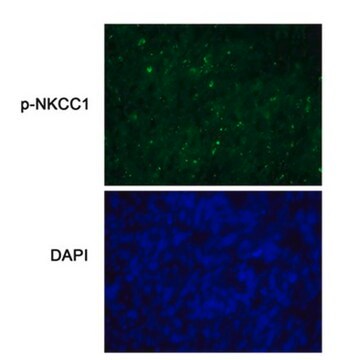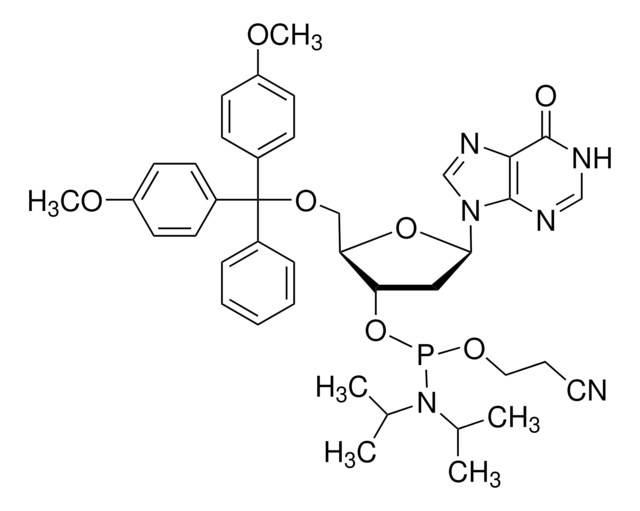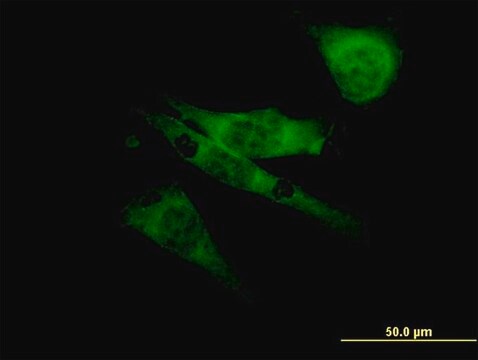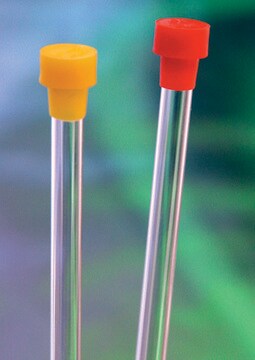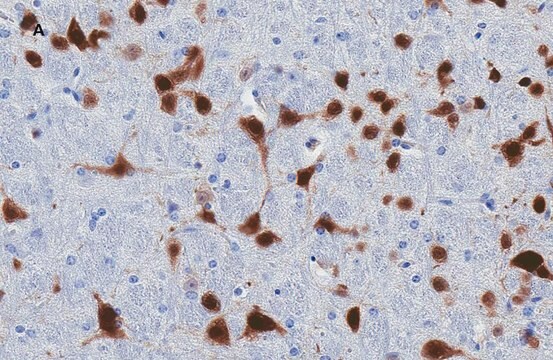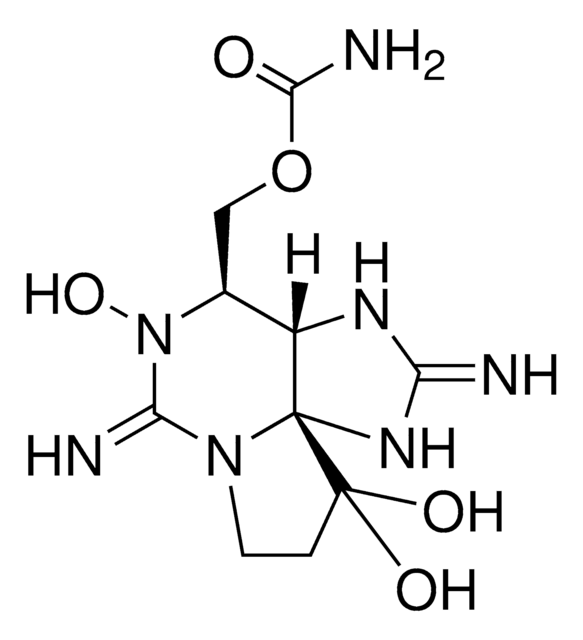MABN616
Anticorpo anti-canale al potassio Kv1.1, clone K36/15
clone K36/15, from mouse
Sinonimo/i:
Potassium voltage-gated channel subfamily A member 1, RBKI, RCK1, Voltage-gated potassium channel subunit Kv1.1
About This Item
Prodotti consigliati
Origine biologica
mouse
Livello qualitativo
Forma dell’anticorpo
purified antibody
Tipo di anticorpo
primary antibodies
Clone
K36/15, monoclonal
Reattività contro le specie
mouse, rat
tecniche
immunofluorescence: suitable
immunohistochemistry: suitable
western blot: suitable
Isotipo
IgG2bκ
N° accesso NCBI
N° accesso UniProt
Condizioni di spedizione
wet ice
modifica post-traduzionali bersaglio
unmodified
Informazioni sul gene
rat ... Kcna1(24520)
Descrizione generale
Specificità
Immunogeno
Applicazioni
Neuroscienze
Canali & pompe ioniche
Immunofluorescenza: utilizzando un lotto rappresentativo, un laboratorio indipendente ha ottenuto la rivelazione del canale del potassio Kv1.1 in cellule COS-1 transfettate con Kv1.1 (Tiffany, A. M., et al. (2000). J Cell Biol. 148(1):147-158.).
Immunistochimica: utilizzando un lotto rappresentativo, un laboratorio indipendente ha ottenuto la rivelazione del canale del potassio Kv1.1 in cellule COS-1 transfettate con Kv1.1 (Wenzel. H. J., et al (2007). Epilepsia. 48(11):2023-2046.).
Immunoistochimica: con un lotto rappresentativo, un laboratorio indipendente ha rivelato il canale del potassio Kv1.1 in tessuto ippocampale di topi wild-type e ha dimostrato la perdita di segnale nel tessuto ippocampale di topi knockout per Kv1.2 (Prof. J. Trimmer, University of California, Davis, USA).
Qualità
Saggio di Western blotting: questo anticorpo alla concentrazione di 2 µg/mL ha permesso di rivelare il canale del potassio Kv1.1 in 10 µg di lisato di tessuto cerebrale di topo.
Descrizione del bersaglio
Stato fisico
Stoccaggio e stabilità
Risultati analitici
Lisato di tessuto cerebrale di topo.
Altre note
Esclusione di responsabilità
Non trovi il prodotto giusto?
Prova il nostro Motore di ricerca dei prodotti.
Codice della classe di stoccaggio
12 - Non Combustible Liquids
Classe di pericolosità dell'acqua (WGK)
WGK 1
Punto d’infiammabilità (°F)
Not applicable
Punto d’infiammabilità (°C)
Not applicable
Certificati d'analisi (COA)
Cerca il Certificati d'analisi (COA) digitando il numero di lotto/batch corrispondente. I numeri di lotto o di batch sono stampati sull'etichetta dei prodotti dopo la parola ‘Lotto’ o ‘Batch’.
Possiedi già questo prodotto?
I documenti relativi ai prodotti acquistati recentemente sono disponibili nell’Archivio dei documenti.
Il team dei nostri ricercatori vanta grande esperienza in tutte le aree della ricerca quali Life Science, scienza dei materiali, sintesi chimica, cromatografia, discipline analitiche, ecc..
Contatta l'Assistenza Tecnica.